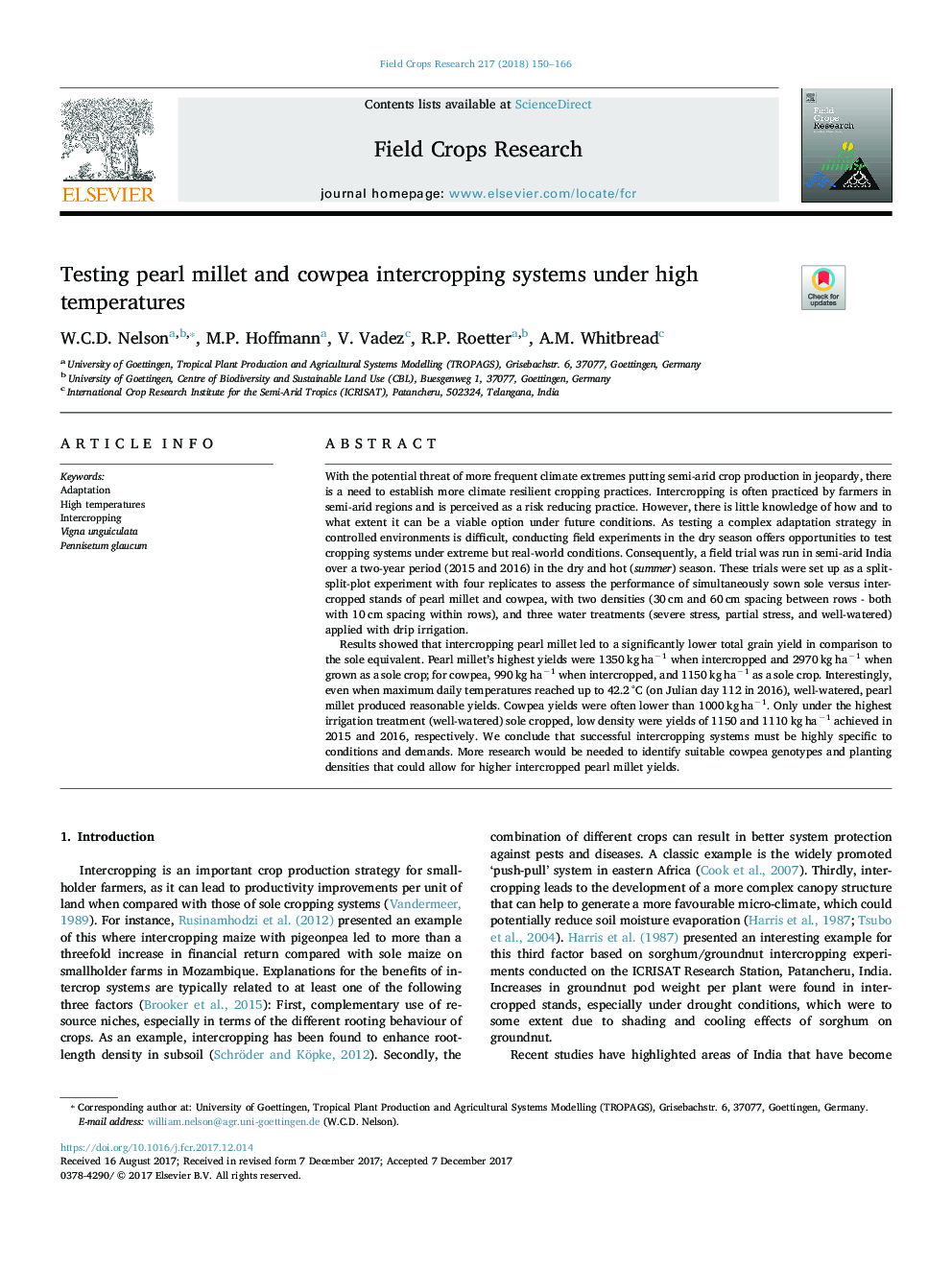| Article ID | Journal | Published Year | Pages | File Type |
|---|---|---|---|---|
| 8879402 | Field Crops Research | 2018 | 17 Pages |
Abstract
Results showed that intercropping pearl millet led to a significantly lower total grain yield in comparison to the sole equivalent. Pearl millet's highest yields were 1350â¯kgâ¯haâ1 when intercropped and 2970â¯kgâ¯haâ1 when grown as a sole crop; for cowpea, 990â¯kgâ¯haâ1 when intercropped, and 1150â¯kgâ¯haâ1 as a sole crop. Interestingly, even when maximum daily temperatures reached up to 42.2â¯Â°C (on Julian day 112 in 2016), well-watered, pearl millet produced reasonable yields. Cowpea yields were often lower than 1000â¯kgâ¯haâ1. Only under the highest irrigation treatment (well-watered) sole cropped, low density were yields of 1150 and 1110â¯kgâ¯haâ1 achieved in 2015 and 2016, respectively. We conclude that successful intercropping systems must be highly specific to conditions and demands. More research would be needed to identify suitable cowpea genotypes and planting densities that could allow for higher intercropped pearl millet yields.
Related Topics
Life Sciences
Agricultural and Biological Sciences
Agronomy and Crop Science
Authors
W.C.D. Nelson, M.P. Hoffmann, V. Vadez, R.P. Roetter, A.M. Whitbread,
